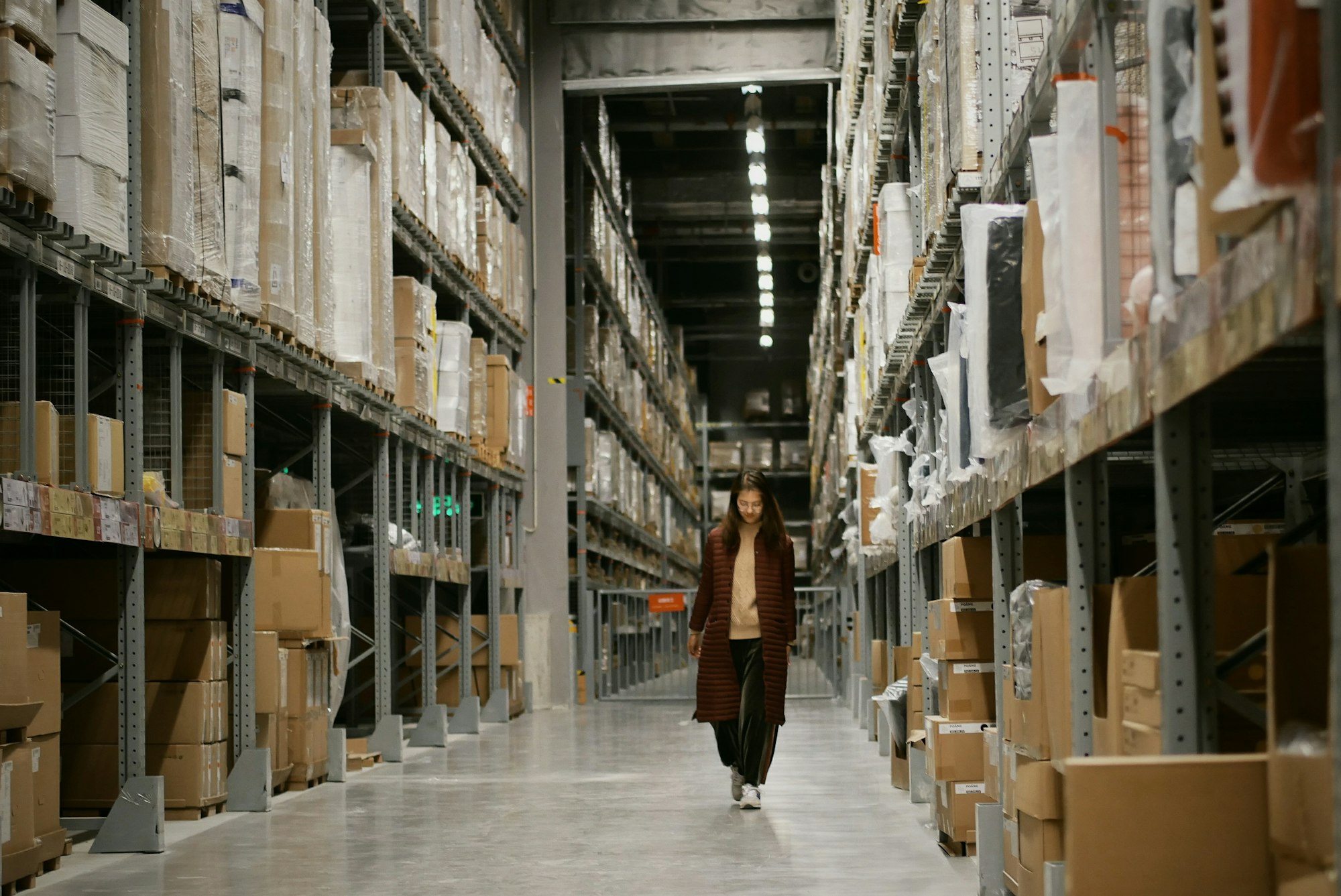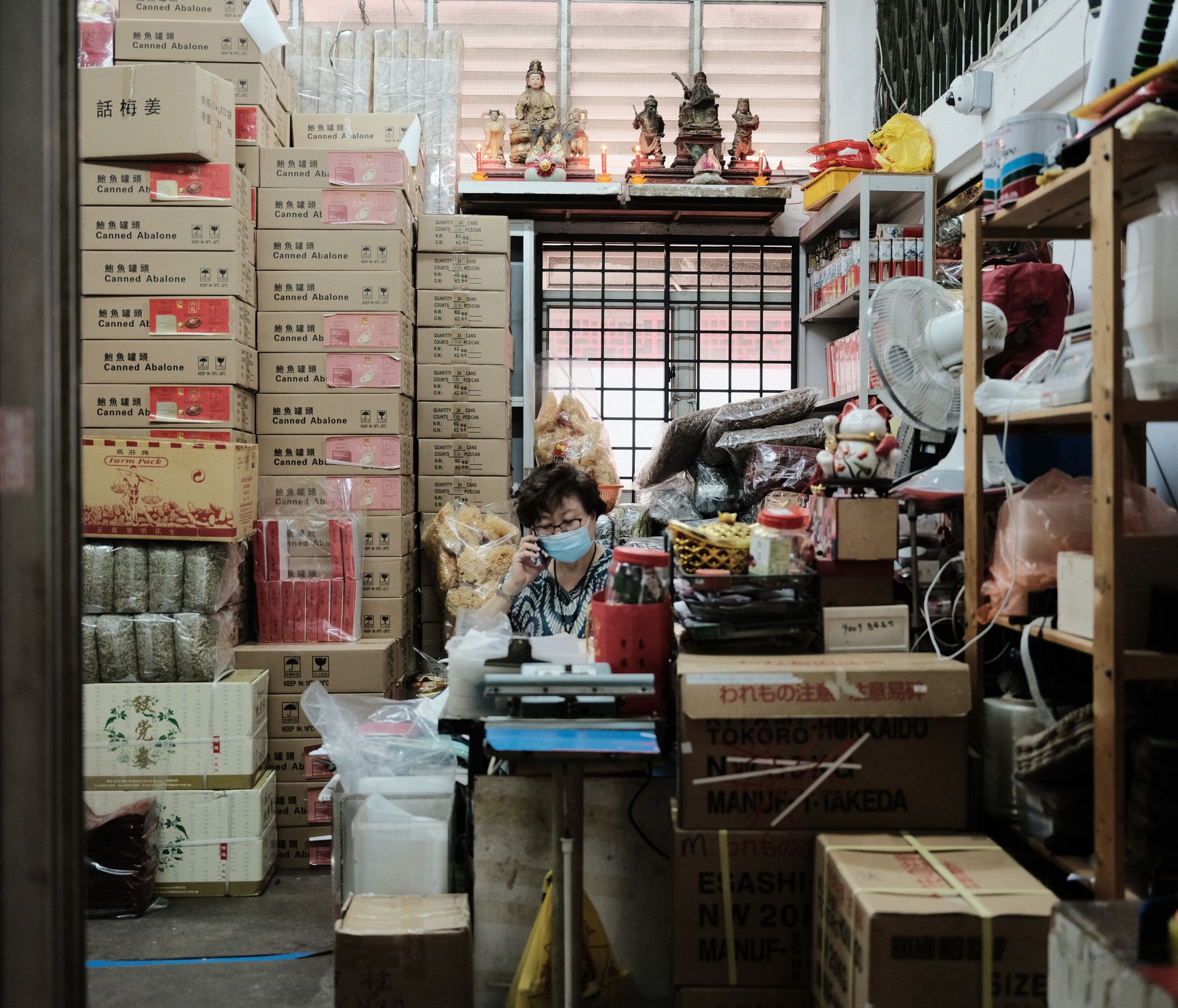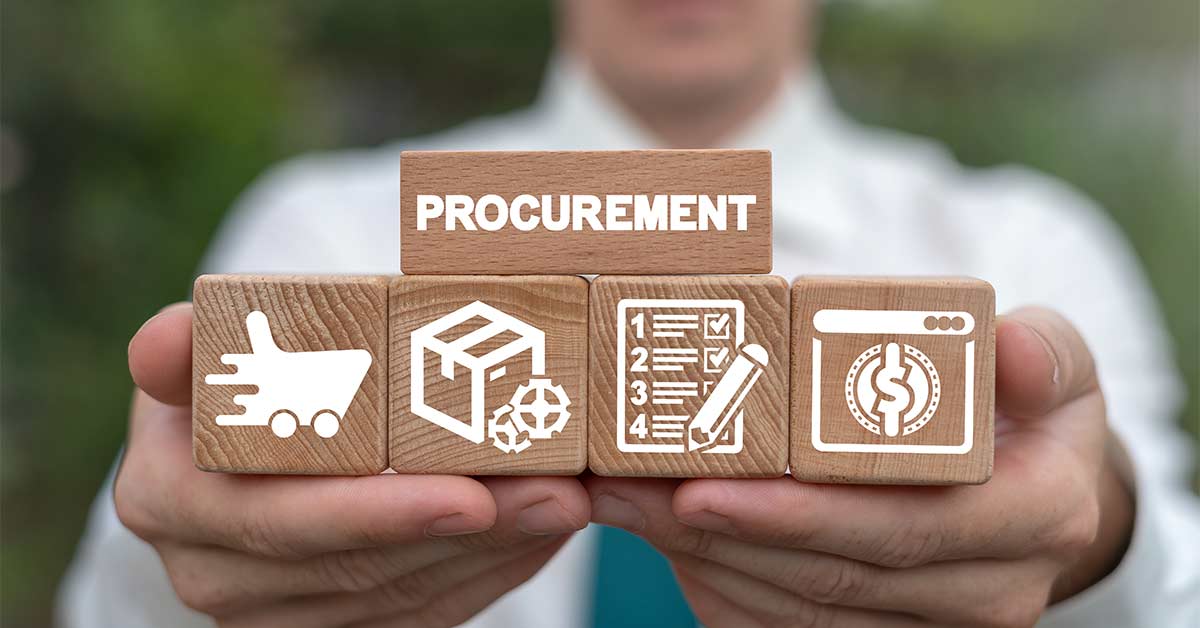Have you been toying with the idea of implementing the rules and procedures that ensure that activities and processes go smoothly throughout the procurement process? However, the appearance of a procurement process is largely dependent on the size and type of company. You should look at personalizing the procurement process to promote optimal efficiency because there is no such thing as a one-size-fits-all solution.
Procurement Cycle is a process of transition of various events that make up the procurement process.

This post takes you on a journey of a detailed explanation of the procurement cycle process. We also have these points lined up in this article:
- Details of the Procurement Cycle
- Importance of Procurement Cycle
- Difference between Purchasing and Procurement
- Stages and 10 steps to take for an efficient procurement
- 3Ps of the Procurement Cycle
- We shall also be learning about the top ways or tips to optimize profits through the procurement process
- How do automated systems streamline the procurement process?
- What are the benefits of a well-designed procurement cycle process?
- Lastly, we shall learn about the importance of procurement planning in the procurement cycle
What is the Procurement Cycle? Procurement Process Explained
The procurement cycle, also known as the procurement process, is the sequence of events that occur during the procurement process. An effective procurement process is crucial to a company's financial efficiency since it helps you find the greatest price for goods and services, reduces delivery times, and assists you in selecting the right partners.
Direct, indirect, and services procurement are all parts of the overall procurement process, although they differ in terms of definition, and other factors. Stakeholders can take suitable measures to meet the demand if they identify the differences between these processes and understand what they entail.
What are the Steps in the Procurement Cycle?
You need to consider the seven critical elements in the procurement life cycle when you reevaluate existing procurement methods.
Define the Items or Services that are Required
The procurement process begins with the requirement to buy goods or services from a third-party vendor. These goods or services can be internal or external. Internal goods are any materials required to run the business and the external materials are the materials that the business will sell. As a result, this stage entails examining each department's needs and establishing a budget.
Make a List of Potential Vendors
This stage entails locating suppliers and determining their capacity to supply goods or services of the highest quality and value. While this stage may appear simple, it is critical to select reliable vendors with whom you can form a long-term bilateral relationship.
Strategic procurement is a less responsive procurement technique because the preferred supplier for most critical purchase requirements will already be in place. It is considered the best practice in this domain.
It is always good to weigh all your options and opt for the supplier with good accountability and production capabilities.
Discussing Contract Terms with the Suppliers
Following your selection of preferred suppliers, the following stage is to negotiate contract terms with them. This stage is critical in determining fair pricing for both parties, as well as a possibility to incorporate any additional payment term elements into the contract. Analyze any previous contracts before entering negotiations to see if there are any ways to reduce costs and save money. Use this expertise to iron out the finer elements of potential deals if your earlier agreements were costly or had unattainable conditions.

Complete your Purchase Order
Now, this is the stage to begin developing, finalizing, and delivering purchase orders after a contract is submitted to a supplier and both sides are satisfied with the fine print.
Your purchase order will showcase this information:
- A summary of the product or service
- Total expenses and Volume
- Validation of workflow
After a purchase order is authorized, the financial team receives this information to disclose the details to the supplier, giving them access to crucial information. A purchase order, which is usually transmitted through email, contains a further agreement between the two parties.
Proceeding with the Payment
When a supplier gets a purchase order, they will send an invoice. The invoice includes the agreed-upon pricing and payment instructions. This should include the order's data from the invoice. It's worth noting that invoice automation is now commonly used to automate this element of the purchase process.
The invoice will include specifics of the payment time permitted. With some companies offering a credit notice, you get time to pay if you can't complete the order at the time it's placed. The payment terms may be worked out on the basis of the relationship and cordiality between the company and the supplier.
Monitoring the Contents of the Delivery
If everything goes per the plan, the ordered goods should be delivered shortly after the supplier receives a purchase order. It's customary for firms to keep track of when the order arrived and to monitor the order contents at this point in the process. In case you find something lacking, it should be notified to the supplier at this point.
Keep Records of Invoices for Future Reference
Keeping accurate records of all invoices and payments is an important aspect of the process. When auditing for cash flow, you’ll be able to gauge the expenditure and assess if there has been an overstepping of the expenditure boundary. Maintaining correct invoicing is also essential for determining whether you're exceeding or staying on track with your budget.

The Importance of the Procurement Process
The procurement process is important owing to the following reasons:
Saves Money
The procurement process will provide you with the greatest opportunity to locate a supplier who best meets your demands while also providing the best value for money. Purchasers frequently use the MEAT technique - Most Economically Advantageous Tender. This entails rating the cost offered by the supplier, scoring the quality responses calculated by them, and then combining the two scores to get a comprehensive picture. Eventually, the tender is awarded to the supplier with the highest total score.
Broadens the range of possibilities
The Procurement process not only allows the Buyer to identify a Supplier who will provide the best value for money, but it also allows the Buyer to receive tenders from potential Suppliers. These could be the suppliers who may have experience and added value that local Suppliers lack or cannot provide. In essence, the procurement process gives the Buyer a greater chance to assess the acceptability of multiple Suppliers.
Difference Between Purchasing and the Procurement Process
A beginner in the field may think of purchasing and procurement as the same terminology. However, a company's procurement officer will provide a much longer explanation about how and why there are so many variations between purchasing and procurement.
Let’s see the two concepts separately before distinguishing them from each other.
What is Procurement?
Procurement can be summed up as a process that encompasses the following tasks:
- Examining the marketplace
- Identifying potential vendors
- Creating a vendor list that has been approved
- Identifying internal requirements
- Making an online purchase order
- Requesting proposals and comparing prices
- Choosing the proper supplier and skillfully bargaining
- Receiving products and inspecting them for quality
- Contract creation and management
- Getting invoice approvals and meeting payment deadlines
- Developing a positive supplier connection
What is Purchasing?
In short, purchasing can be termed as a subset of the wider operations included under the procurement process.
Here is what the purchasing process entails:
- Getting your hands on a sales invoice
- Obtaining proposals and comparing prices
- Sending out proper purchasing orders
- Obtaining goods and services
- Examining the given items for quality
- Making the due payments to the vendors
Having understood the two concepts, let’s dive deeper into the differences between the two.
10 Steps of the Effective Procurement Cycle
Now, let's learn about the 10 steps of the effective procurement cycle.
Need for Recognition
The company's purchasing department and management must comprehend and determine the requirements for new product development. Both internal and external sources can help in the process. The required product is eventually either the one that needs to be reordered from the vendors or is a new item for the business.

Define Specifications
The correct product is critical to the company's success. Some sectors have guidelines to help define product specifications. However, some industry domains have no basis for comparison when ordering products. If the specifications are not available beforehand, the company needs to define the required product in terms such as color, weight, and other such specifications.
Shortlist Vendors
The company must next determine the sources from which it will receive the product.
Many businesses maintain vendor lists of their regular suppliers that are already approved.
If it is not available, the corporation will have to rely on buy orders or look for a supplier through a range of alternative avenues such as social media, internet portals, and other sources.
Pricing and Conditions
The company must then analyze all relevant and critical facts in order to establish the optimal pricing and terms for the goods in question. This will be determined by whether the company requires ready-to-use products or custom-made materials.
According to the market convention, the company will shortlist three suppliers before making a final decision.
Order for Purchase
The purchase order is a detailed document that is used between a buyer and a seller to purchase materials. It specifies the price, the product's specs, the product's terms and conditions, and all other relevant terms in accordance with industry standards.

Delivering
The purchase order should be delivered through e-mail or hand delivery. The delivery approach is extensively stated in the purchase order. The recipient then takes possession of the purchase order, and then both participants maintain a copy for record and review.
Fast-Tracking
This stage involves addressing the delivery deadlines of the purchase order. At this stage, it is important to recognize and note any kind of delays in the delivery of the order. Payment schedules and order’s final completion are the most common complications that emerge during this stage.
Final Receipt and Assessing the Purchases
After the vendor has delivered the products, the receiving company either accepts them or rejects them based on the satisfaction of the specifics mentioned in the terms of the purchase order. The corporation is obligated to pay the vendor for the things it receives if it accepts them.
Approving Invoice and Making the Final Payment
The invoice, the receiving document, and the original order are the primary documents in any transaction. The signatures on these documents affirm the agreement of both parties, and any inconsistencies must be rectified before the recipient pays the final payment.
Based on the terms and conditions, the party makes the payments in either cash, cheque, direct deposit, or other types of electronic transactions.
Maintaining Records
The organization must keep accurate records for audits and other financial reporting so that they can be properly evaluated. Purchase records are used to check any tax-related data, and the purchase order document ensures that the required information is accurate.
Procurement Methods in the Effective Procurement Process Cycle
Procurement methods are used by the procurement team in the company. We shall learn about the 6 most commonly used methods in the process. Although they are named differently in different industries, the processes remain the same.
The six procurement methods are:
- Open Tendering
- Request for proposal
- Restricted tendering
- Two-stage tendering
- Single-source procurement
- Request for quotations
Let’s see each one in detail:
Open Tendering
It is similar to competitive bidding where companies can openly bid or compete for goods. This helps generate a good value for the goods. Moreover, the process also helps the companies to publicize their business locally. The companies should allow all qualified bidders to participate.
Open tendering, ironically, stimulates effective competition in the acquisition of goods, with a focus on good value. However, because this is a processes strategy, many procurement analysts claim it is ineffective for large or complex acquisitions due to the excessive focus on the results rather than strict compliance.

Request for Proposals
This type of proposal is a one-of-a-kind and comprehensive document that explains why your company is the greatest fit for the job at hand. In the procurement business, an RFP is a technique by which suppliers propose their product or service for assessment by a procurement team. As a supplier, you need to completely understand the nuances of quality service management.
When a client believes that they can fulfill the requirement of the procurement team, they should provide evidence of their eligibility. A two-envelope proposal is ideally submitted to the manager by the companies writing the RFP. This process enables the procurement team to thoroughly analyze the proposal while remaining unaware of the financial angle.
The second envelope contains the price quotation, which should only be unsealed once the first envelope proposal has been authorized or refused. This reduces any cost-based influence. The proposal with the most appropriate qualifications and the most reasonable pricing will be chosen.
Restricted Tendering
Restricted tendering limits the number of requests for tenders that a supplier or service provider can send. It is sometimes also referred to as selective tendering because of this selected approach. Restricted tendering is a competitive procurement process similar to open bidding, except the competition is restricted to firms invited by the purchasing team. When selecting the suppliers and service providers who will be on the invitation list, the procurement entity should establish standards to follow. This approach is selective in its search for the best-suited firm.
Two-Stage Tendering
The two-stage tendering is divided into two sub-categories which are further divided into two processes. This could be cumbersome and time-consuming for the procurement teams to follow. In case, there is a time limit for securing the contract, the team may lose out on the opportunity.
However, the elaborate procedure, on the other hand, allows the participating teams to discuss the mutual requirements at length.
As mentioned, the two-stage tendering comprises two procedures.
Single-Source
This one is a non-competitive method of procurement. Single-source procurement is used only when explicitly communicated. The method is applied when the procuring team looks only for a particular supplier for the procuring goods or services. Therefore, the process strictly requires approvals from the management.
There are certain conditions in which single-source procurement is carried out. These are:
- Crises or emergencies
- If there is only one competent provider who can meet the standards
- If the benefits of employing a particular supplier are obvious
- For continuing the work that no other provider can duplicate
Request for Quotations
This is done for small-valued goods or services. This is the most preferred method as it is the simplest and is the least time-consuming. This method allows for minimal paperwork along with ensuring a faster procurement. There are no formal agreements between the parties. Fundamentally, the process has the team selecting three suppliers they wish to see the quotes from. Based on the requirement-fulfillment and the quotes of the proposal, the best-suited proposal is selected.
The 3Ps of Procurement Cycle
From request to purchase order and invoice approval, it's a sequence of processes that are required to receive products or services. Procurement covers the activities associated with getting essential products and services on account of an organization whereas purchase is the broader process of obtaining them on behalf of an organization An organization's buying process is unique to its setting and operations.
Every procurement process consists of the three Ps as described here:
- Process
- People
- Paperwork

- Process
The set of guidelines to follow while evaluating, ordering, purchasing, and spending for products and services. The number of checkpoints/steps increases as the purchase becomes more complicated.
2. People
The stakeholders play an important role in the procurement process. Every stage of the procedure is initiated or authorized by them. The various stakeholders associated is roughly equal to the purchase's risk and value.
3. Paper This pertains to all of the documentation generated during the procurement process. This paperwork is kept safe for future reference and auditing.
Tips to Optimizing Profits via the Procurement Process
Procurement is a core strategy that aims to increase a company's profitability. In this section, we discuss the top ways to maximize profitability.
Streamline and Organize
Automate your workflows to save time. Processes are streamlined and efficiency is increased with the correct procurement tools in place like automation. This helps decrease the time spent on repetitive operations. Because automated workflows remove time-consuming administrative processes and guarantee that the appropriate users are alerted when action is necessary, employees get more time to concentrate on other important functions.

Centralize Information
Teams across an organization spend a considerable amount of time tracking purchase orders and gathering other relevant information. When you digitize your procurement documents, all the teams and the people involved could reclaim a lot of working time throughout the day.
Purchase only from trusted Vendors
To enable the optimization of profits, it is essential that you buy only from the trusted and contracted suppliers. They not only offer a great service but at competitive prices as well. A good digital procurement software empowers you to avoid an unsound expenditure and spend only with preferred vendors.
Leverage Data for Negotiating Discounts
With automation and processes with an integrated ERP, tasks like invoice approvals and making payments can be completed in a timely manner. This helps improve relationships with the vendor and opens up avenues of new opportunities for the future. Also, with analytics and technology-enabled spend procedures, you can avail of discounts and cost concessions.
Merge Purchase Orders
Procurement teams aim at submitting purchase orders efficiently to reduce costs. With procurement software, centralization and merging multiple purchase orders is an easy task. This helps reduce the costs and positively affects the profits.
Change Spending Behaviour
Work on the spending behavior by encouraging a responsible spending culture. Digital procurement software comes well for assuring price accountability and allowing users to make better spending. This helps realize an overall increase in gains.
Calculate the Risks
When you use procurement software, it is convenient to adhere to the company’s expenditure policies. Before granting requests, the designated managers can assess the impact of spending on budgets. This knowledge helps you make better decisions and keep costs under control. It's simple to ensure that company expenditure policies and processes are followed with procurement software.
This shows that the entire procurement process is aimed at making savings easier with technology.
How Automated Systems Streamline the Procurement Process
Companies should have a simple proposal creation and approval procedure, and great visibility into their purchase process. They should also look for effective and reliable approval to optimize spend management, reduce purchasing costs, and enhance profit. The process becomes much easier with the support of an automated procurement system.
Purchase Order Forms in Digital Format
The digital purchase requisition forms make it extremely convenient for the procurement team. This is made available to them through the procurement software. This way, manual printing, paperwork, and other processes could be eliminated. This helps save the overall time for the entire team working on the project.

Workflow for Advanced Approval
An automated approval system applies the right authorization to each request and spends only within the approved budget. Providing procurement workers with connectivity to products and services from selected vendors enables purchases to be made in accordance with corporate purchasing policy.
Maintaining Expenditure Transparency
Better accounting accuracy, on-time payments, and stronger supplier relations result from improved spend visibility. Every transaction is tracked centrally; be it the purchase request or the orders fulfilled.
Managing Orders Competently
E-procurement systems are considered excellent instruments for increasing efficiency. They enable the staff to receive the commodities they desire from an inventory of approved items in the duration required. The system also guarantees a timely acknowledgment of the received permissions for placing the order with the supplier.
Improved Invoice Processing for Suppliers
Due to the pre-approval of purchase requisitions, all invoices become PO-based. Now, these can be instantly verified with the corresponding goods receipt and the purchase order. This helps make the payments in time and also earns some early payment discounts. Moreover, businesses can bargain for additional reductions due to cordial supplier relationships.
To summarize, the automated systems diligently provide for adaptable self-service and better process understanding.
Benefits of a Well Designed Procurement Cycle Process
The finances are where you will most likely benefit from effective procurement optimization. From procuring goods and services to accomplishing agreements at the best price are now possible through a proficient procurement cycle.
Here’s a list of the top 5 benefits you receive when you adopt a well-designed procurement cycle.
- Helps you save time and provides a proper solution for your company's requirements.
- Ensures that you are paying the correct price
- Helps you avoid missing crucial actions that may lead to disaster later;
- Gets you and the supplier on the same page of your strategy.
- Helps maintain honest bookkeeping and free of fraud.
Moreover, the companies can not keep a track of and take advantage of any discounts and concessions which they missed previously. This along with the other back-end savings and transparency in spending gives the companies an added advantage.
Importance of Procurement Planning in the Procurement Cycle
The procurement cycle begins with a procurement plan, which establishes a timeframe for when and what things will be bought depending on the budget. A well-charted procurement planning can provide a lot of advantages. The top 5 benefits of procurement planning are outlined here to help you establish its importance and how beneficial it can be.
Reduced Costs
This is one of the most well-known advantages of procurement planning. By a careful selection of suppliers and competent product sourcing, companies can now optimistically look at saving costs. It helps you work within the deadlines and negotiate with the suppliers to complete the process. Comparing the quotations received from the various vendors is also a benefit of good procurement planning.
Careful Surplus Resourcing
You need to keep in mind the peak durations and strategize for the coming times. This may be in terms of people or business vehicles, or any other aspect of resourcing. A well-planned procurement process will help you analyze your current resource situation and guide you in case you need to hire more resources.
Honesty
The procurement plan is put in place for the entire team and staff to make use of. As everyone can access it, there is an added transparency introduced in the process. Moreover, it also offers a great deal of flexibility in case something goes wrong. It also provides opportunities for damage control and helps amend the plan for better results in the future.
The benefits of procurement planning have an impact on the overall productivity and activities of the company. This makes it an important aspect of the procurement process. We have also learned how procurement planning could be one of the remarkable ways for achieving meritorious procurement.
How can Deskera Help You with Procurement Cycle Processes?
You can invest in accounting software to assist you to keep track of your journal entries, balance sheet, inventory, and overall procurement management as a business owner. A successful firm requires an effective financial strategy that is tailored to the company's specific requirements.
Deskera Books is online accounting software that can help your company save time by automating the process of creating journal entries. For each sale and purchase business transaction in debit and credit terms, the double-entry record will be auto-populated. The transaction data is consolidated into each ledger account by Deskera. Their values will be instantly transferred to the corresponding financial reports.
You can have access to Deskera's ready-made Profit and Loss Statement, Balance Sheet, and other financial reports in an instant.

Deskera can also help with your inventory management, customer relationship management, HR, attendance and payroll management software. Deskera can help you generate payroll and payslips in minutes with Deskera People. Your employees can view their payslips, apply for time off, and file their claims and expenses online.
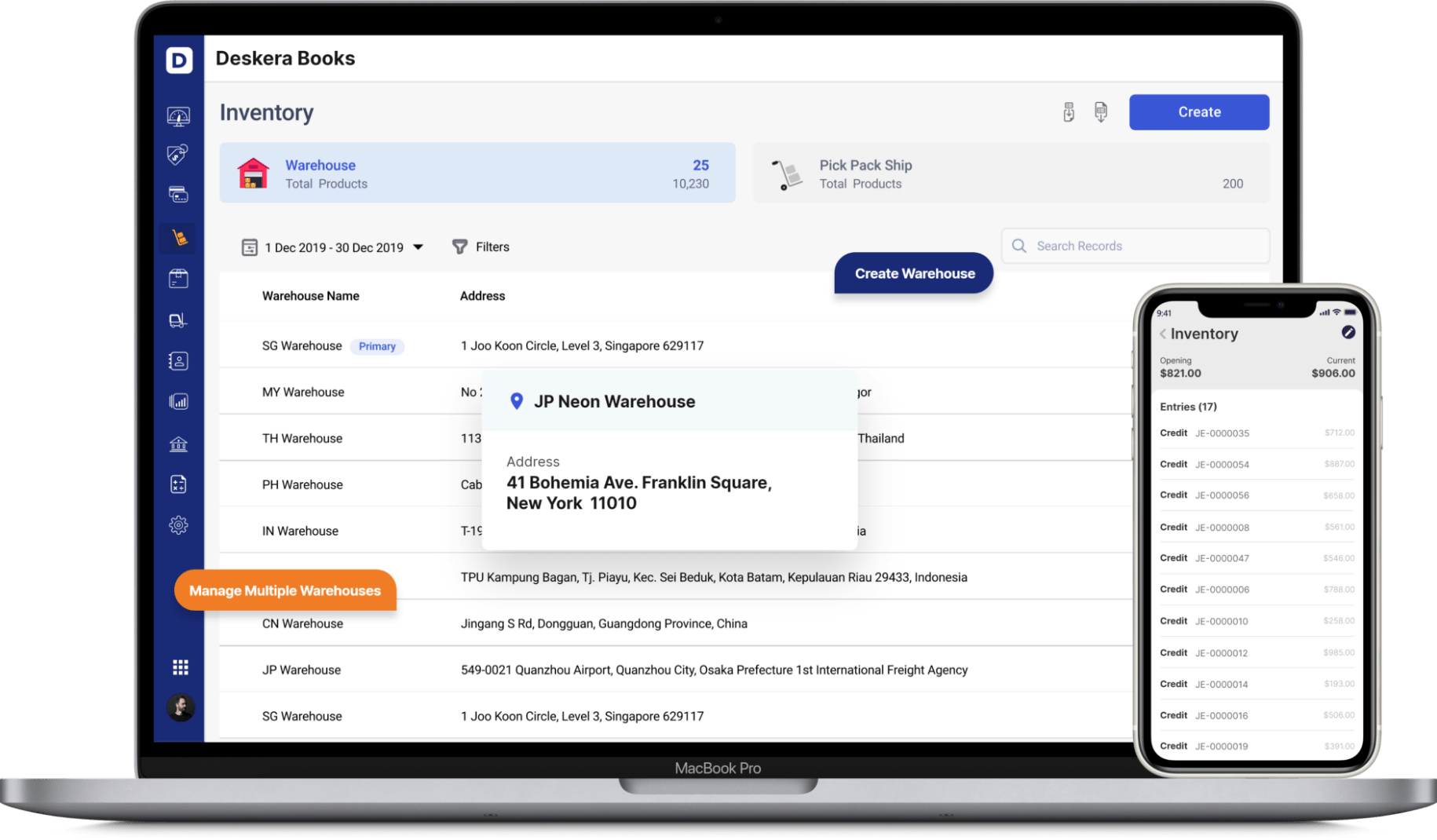
Deskera can also guide you on a variety of subjects such as management accounting principles, inventory valuation techniques, and understanding Tangible and Intangible Assets. With the all-inclusive software from the house of Deskera, you’’ find it more convenient to manage your customers and generate more revenue.
Deskera CRM is a simple, fully-featured platform that can help you with contact and deal administration, sales pipeline management, email marketing campaigns, to name a few. You can generate leads for your business by creating email campaigns and view performance with detailed analytics on open rates and click-through rates (CTR). Deskera CRM is an easy-to-use platform that will assist you in contact and deal management, sales pipeline, email marketing campaigns, customer support and ticketing management to mention the important ones.
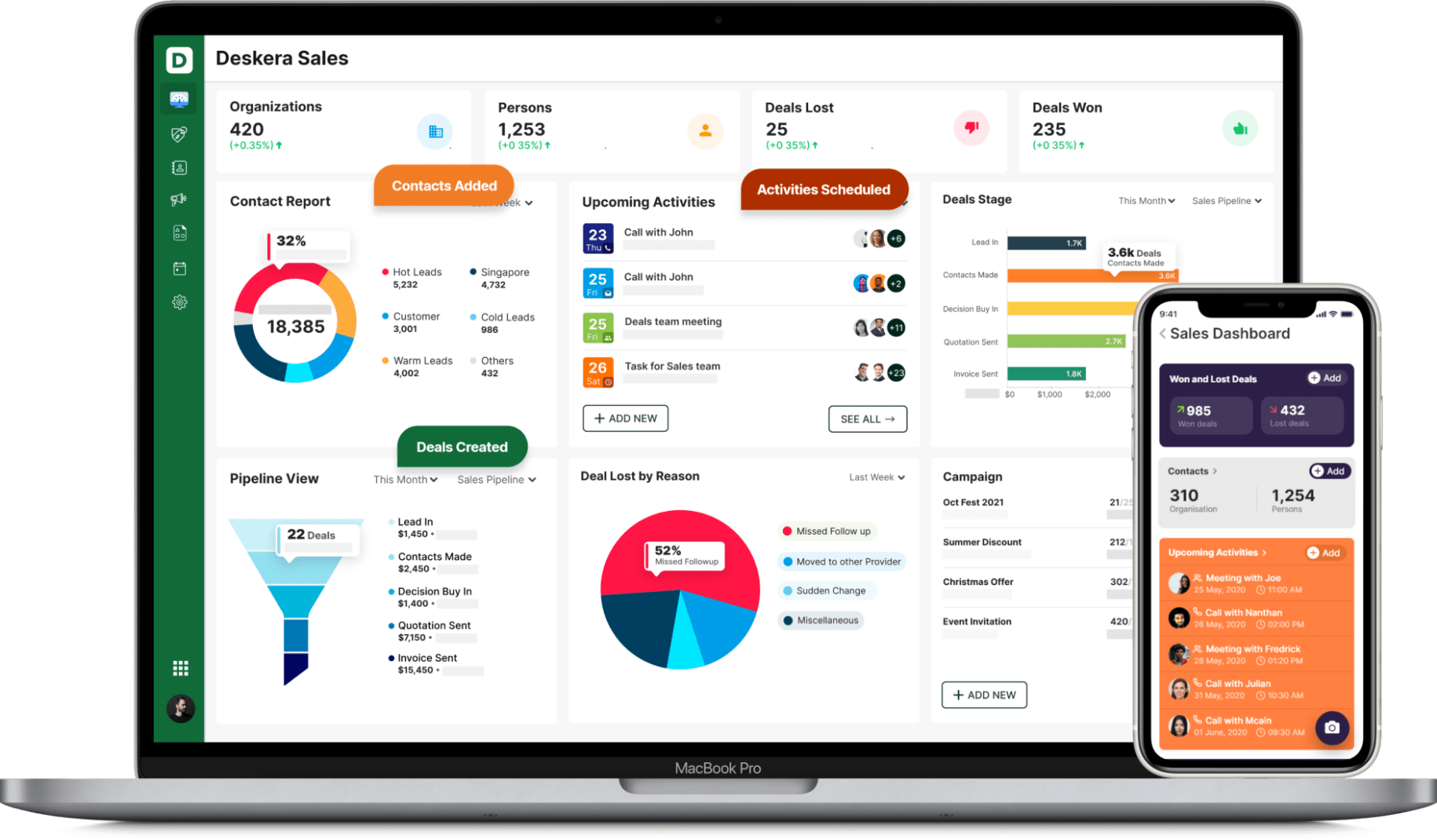
Deskera is an all-in-one software that can overall help with your business to bring in more leads, manage customers and generate more revenue.
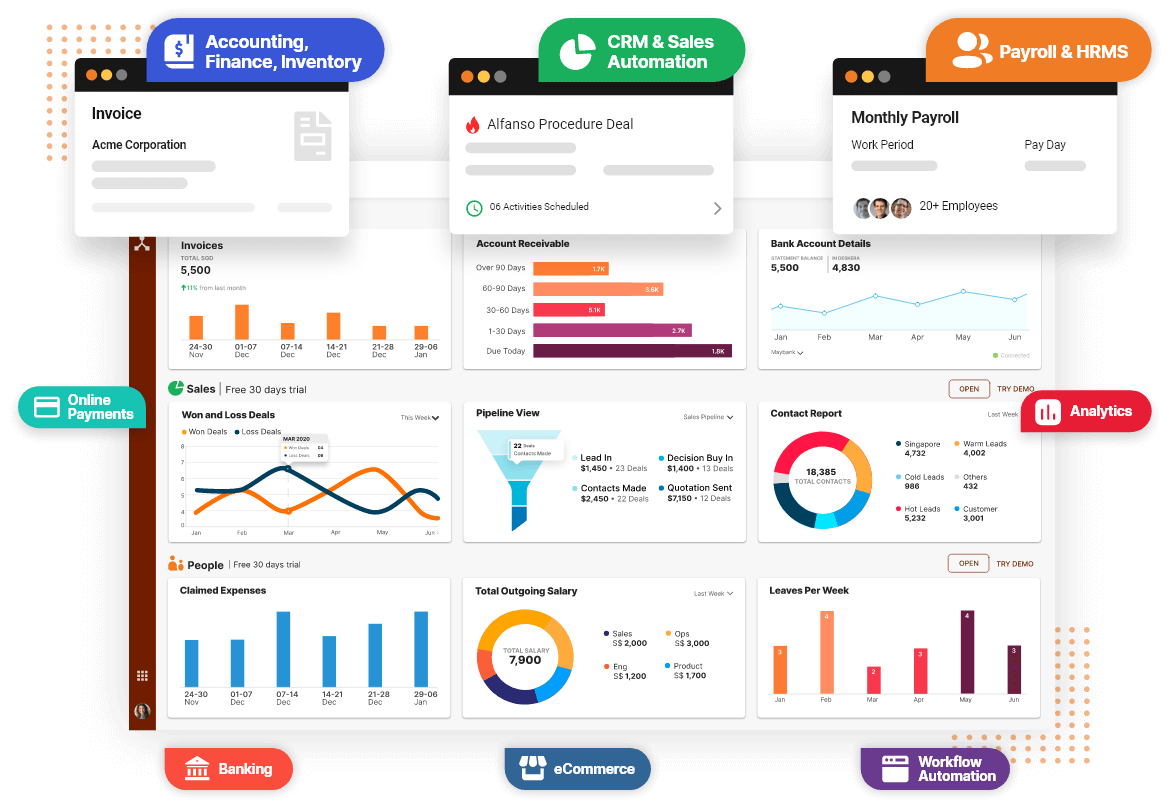
Key Takeaways
With the following points, we wind up the article with the hope that it helped you learn in-depth about the concept of procurement planning and the procurement cycle.
- Procurement Cycle is a process of transition of various events that make up the procurement process.
- Direct, indirect, and services procurement are all parts of the overall procurement process.
- Saving money, broadening the range of possibilities are some of the benefits of the procurement cycle.
- Procurement and purchasing are separate concepts, although they are used interchangeably often.
- Recognizing the requirements, defining specifications, shortlisting vendors, ordering & receiving the order, and assessing purchases are the steps for effective procurement.
- Open tendering, request for proposal, restricted tendering, two-stage tendering, single-source, and request for quotations are the procurement methods in an effective procurement cycle.
- Process, people, and paperwork are regarded as the 3 Ps of the Procurement Cycle.
- Automated systems diligently provide for adaptable self-service and better process understanding.
Related Articles
